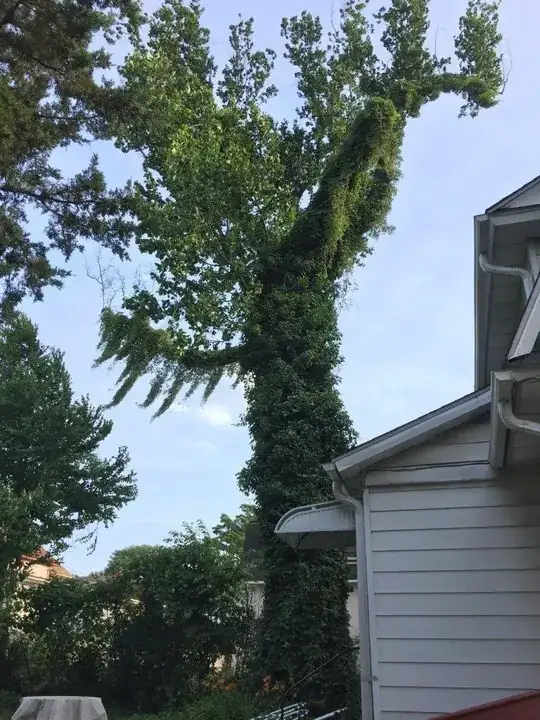The house we recently moved into has a large tree that I believe to be a Tulip Poplar in the back yard. It's 40-45 feet tall and the trunk is roughly 21 feet around (~6.7 feet across). However, it was topped before we bought the house, and the trunk is covered with ivy for almost the entire height. I don't know how old the tree is, but the house is about 90 years old.
Aside from one (large) side branch that appears dead, the remaining branches are growing leaves, but the arborist I've talked to (over the winter) said that they probably aren't enough to feed it. The tree is close enough to the house that if it fell in our direction, it would cause serious damage, but it's also close enough to the edge of the property that if it fell in almost any other direction, it will "just" hit a parking lot.
As such, I have the following two questions:
- Is the tree as much of goner as it seems? Or is it likely to be able to last for a while if left alone?
- If we do have the tree taken down, could I find someone who could benefit from that (other than via firewood or wood chips)? Would there be anyone worth contacting to see if some of the wood would be useful to them? Or should I just let the arborist who takes it down do whatever they choose with it?
(For some far-fetched thoughts, might anyone be interested in turning some of it into one of those tree slices at nature museums which point out all the rings for historic events? Or climate research? Or is it practical to commission someone to make something out of the lumber?)
Finally, pictures! (Click for full size)

